BBC's Tokyo 2020 trailer "brings the Olympics into everyday Japan"
The founders of film and animation studio Factory Fifteen have revealed how they fused Japanese pop culture with sports references to develop a frenzied promo video for the Tokyo 2020 Olympics.
As the trailer for the BBC's media coverage of Tokyo 2020, the one-minute video takes viewers on a fast-moving journey through different city scenes, featuring everything from J-pop and anime to Japanese toys and street signage.

Factory Fifteen directed the video, which was produced by film and interactive production company Nexus Studios and released under the BBC Creative brand with the title, Let's Go There.
Studio founders Kibwe Tavares, Jonathan Gales and Paul Nicholls told Dezeen their aim was to use "a heightened sense of reality and fantasy" to weave the story of British athletes into Tokyo's already vibrant culture.
"The film brings the Olympics into everyday Japan," said Gales.
"The fact that no one can go to Tokyo to visit for the Olympics was a big part of the conversation early on," he explained.
"We wanted people to be really excited, even though they can't be there. That's why we decided to snapshot vignettes of normal everyday scenes in Tokyo. We want people to be wowed – to question whether that's what Tokyo is really like – and to have an emotional attachment to the drama."
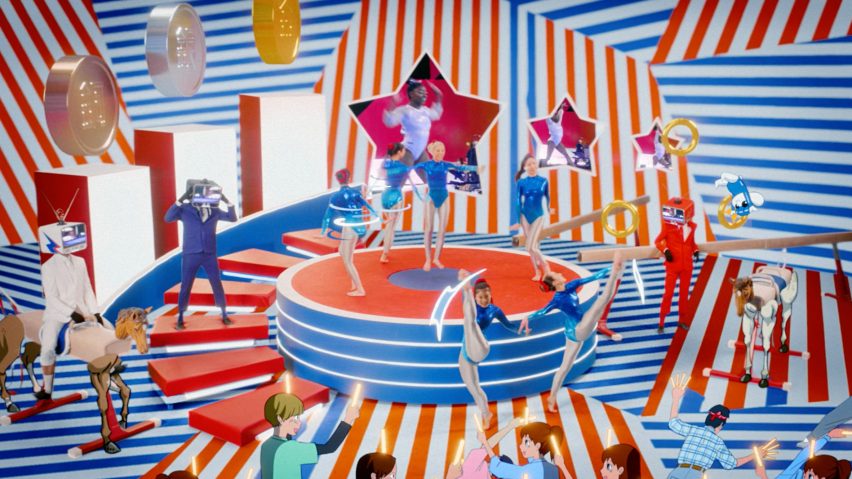
The narrative plays out across six scenes, which are all interconnected. It starts on the streets of Tokyo, before moving into a J-pop music video, a video game arcade, a shop for gashapon (vending-machine capsule toys), a teenager's bedroom and then out onto the city rooftops.
Olympic athletes are carefully interwoven into each scene in a multitude of different ways, even though they never feature in person.
Cyclists Jason and Laura Kenny are depicted on manga-style graphic posters, while heptathlete Katarina Johnson-Thompson features in a series of gashapon toys that showcase her different events.
We also see skateboarder Sky Brown on tourist merchandise, while various athletes are characters in a Street Fighter-style arcade game.
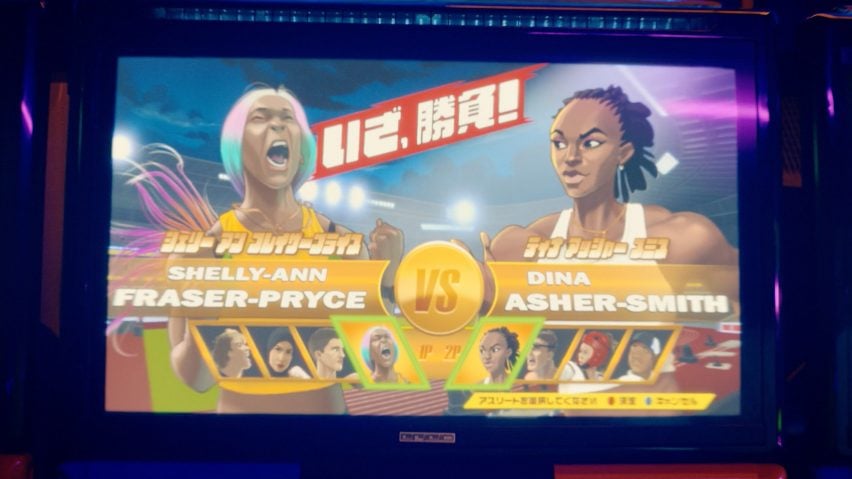
A single-camera technique was used to create a continuous, ever-moving journey through these scenes, which is what gives the video its fast-paced feel.
"The thing that we jumped on was this idea of creating a singular journey, making it as seamless as possible, then building environments where everything's really overwhelming and disorientating," explained Tavares.
"It's not a traditional character-led piece; you're not following a group of Olympians through a linear narrative," added Nicholls. "It's much more environmental-based storytelling."
"It became important to us that, when you watch this thing 20 times, you still notice something different," he said. "With the camera as the constant character, you can allow your eye to dot around and notice all these different things."
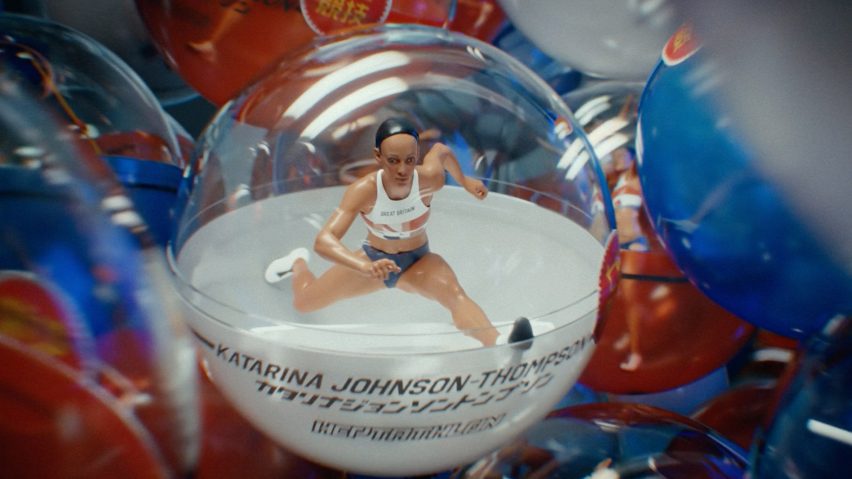
The production team have added a whole host of "easter egg moments" within the film to enhance this feeling of constant discovery.
Examples include the J-pop dancers recreating the iconic mic drop moment that American gymnast Simone Biles included in a floor routine, a gashapon machine dedicated to BBC pundits and an animated gymnastics bunny that collects rings in the style of Sonic the Hedgehog.
"We really like making the audience work a little harder," said Tavares. "All the little details are there, but you have to work to find them."
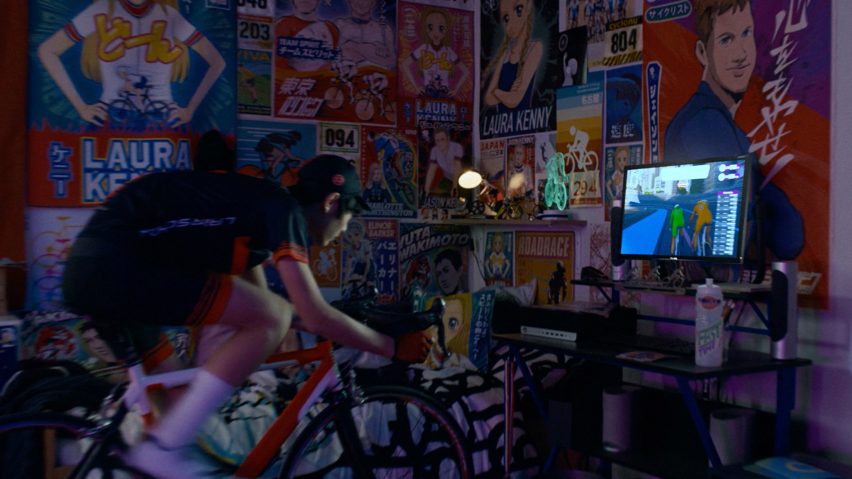
Some of these details will become clearer once the Olympics is underway, he explained.
"As the Olympics continues you'll get to know people like Sky Brown. You might know who she is now, that she's this protege, but once the Olympics has started you're going to find out so much more about her. So when you watch this again, you're going to see how much stuff is related to her."
Tavares, Gales and Nicholls founded Factory Fifteen in 2011, after studying architecture together at the Bartlett in London. Many of their early films – several of which made their media debut on Dezeen – were set against a backdrop of dystopian future cities and landscapes.
Today the trio have a more diverse showreel, but many of their projects still incorporate elements of architecture, fiction and fantasy.
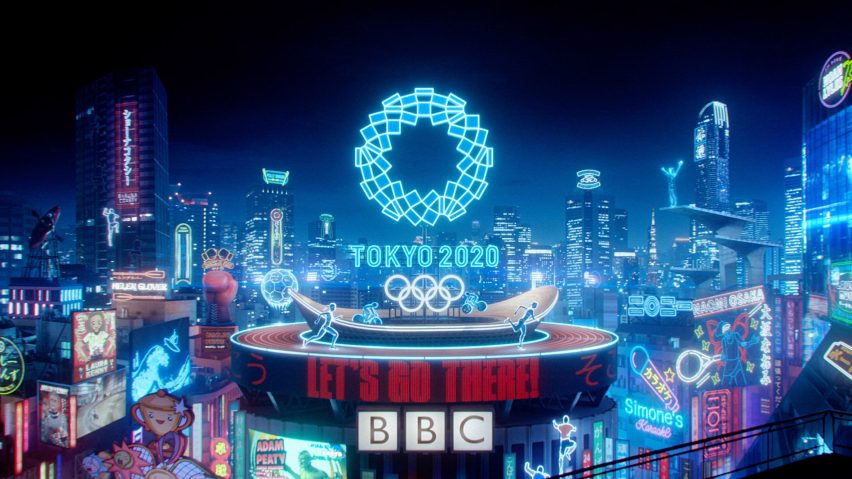
"Japan was such a good canvas for this type of idea," Nicholls said. "They work with pictures and icons much more than other countries, so our task was just to figure out where to find these uniquely Japanese pictures and scenes, and replace them with references to the Olympics."
"Even though it's a like-for-like replacement, so it's supposed to be relatively subtle, it actually creates a heightened and fantasy feel," he said.
The film is set to a soundtrack that incorporates traditional Japanese instruments and Min'yō-style vocals. This was created by anime composer Kenji Kawai, whose portfolio includes Ghost in the Shell, Avalon and Hyakkin.